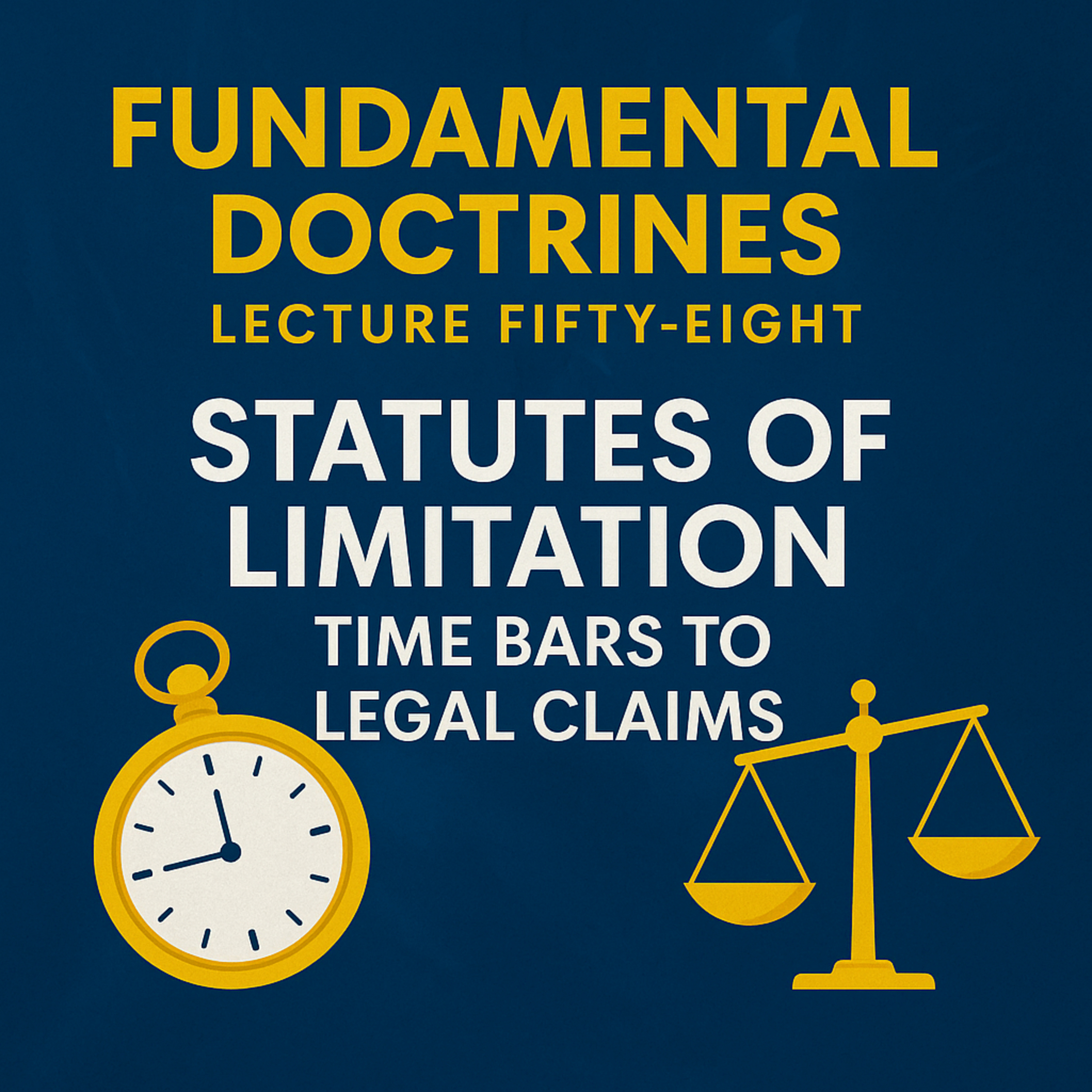Podcast Episode Details
Back to Podcast Episodes
Fundamental Doctrines Lecture Fifty-Eight - Statutes of Limitation: Time Bars to Legal Claims
In this enlightening episode, we delve into the intricacies of statutes of limitation and repose, unraveling their significance in the legal landscape. Discover how these legal timeframes impact both plaintiffs and defendants, and why understanding them is crucial for navigating the justice system effectively. Join us as we explore real-world examples and expert insights to shed light on these often misunderstood legal concepts.
Imagine you're involved in a legal dispute, and just when you think you're ready to take action, you find out that time has run out. This is where the concepts of statutes of limitation and repose come into play. These legal timeframes can make or break a case, and understanding them is essential for anyone navigating the legal system.
Understanding Statutes of Limitation: Statutes of limitation set the maximum time after an event within which legal proceedings may be initiated. As legal expert Jane Doe explains, "These statutes are designed to ensure fairness by preventing the indefinite threat of a lawsuit." They vary by jurisdiction and type of claim, so it's crucial to know the specific limitations that apply to your case.
The Role of Statutes of Repose: While similar to statutes of limitation, statutes of repose serve a different purpose. They provide a final deadline for filing a lawsuit, regardless of when the harm was discovered. John Smith, a seasoned attorney, notes, "Statutes of repose are about providing certainty and finality, especially in industries like construction and manufacturing."
Real-World Implications: Consider a scenario where a construction defect is discovered years after a building is completed. The statute of repose may bar any legal action, even if the defect was hidden. This highlights the importance of understanding these legal timeframes and seeking timely legal advice.
Navigating the complexities of statutes of limitation and repose can be daunting, but it's a critical aspect of legal strategy. By understanding these concepts, individuals and businesses can better protect their rights and make informed decisions. Subscribe now to stay informed about more legal insights and updates.
Takeaways
Statutes of limitation are essential for fairness and efficiency in law.
The discovery rule allows for fairness in cases of hidden injuries.
Civil statutes of limitation apply to various types of claims, including torts and contracts.
Breach of contract claims have specific limitation periods that must be adhered to.
Medical malpractice cases often involve complex interactions between statutes of limitation and repose.
Criminal law has its own set of statutes of limitation that protect defendants' rights.
Certain serious crimes have no statute of limitations, reflecting societal interests in justice.
Tolling provisions can pause the statute of limitations under specific circumstances.
Continuing violations can reset the limitation period for ongoing wrongs.
Understanding these legal timeframes is crucial for effective client representation.
statutes of limitation, statutes of repose, legal doctrines, discovery rule, civil law, criminal law, medical malpractice, breach of contract, tolling provisions, legal strategy
Published on 3 months, 2 weeks ago